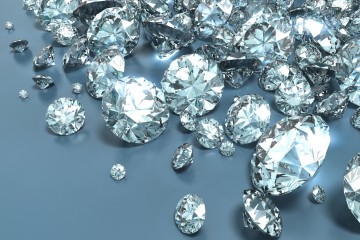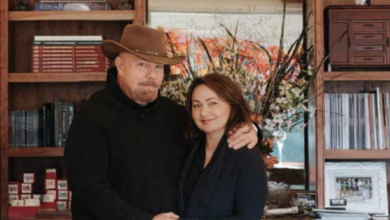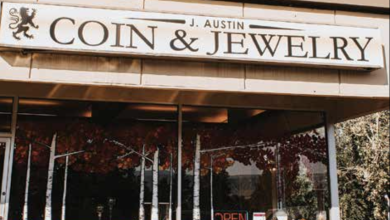Understanding Diamonds
 In this issue we wanted to get some customer questions answered regarding the most popular gemstone: diamond.
In this issue we wanted to get some customer questions answered regarding the most popular gemstone: diamond.
What are diamonds?
Diamonds are made of pure carbon, formed under extremely high temperature and pressure below the surface of the Earth. They are then forced up to the surface through volcanic activity for humans to find and enjoy. You can buy one at J. Austin & Company, or go to Crater of Diamonds State Park in Arkansas and look for one on the ground.
I know my stone is a diamond, because it cuts glass, right?
Actually, anything harder than glass will cut glass (even amethyst). Old-school diamond brokers used to place a diamond on a sheet of paper with a line drawn across it. If you can see the line through the stone, it’s not a diamond, but most likely a cubic zirconium or other simulant.
Why do we celebrate engagements with diamonds?
Many believe that diamonds are advertised as the gemstone of choice for engagement rings because they are the rarest and most expensive. Diamonds register at a 10 on Moh’s hardness scale, making them the hardest gemstone available to mankind. This property alone makes them highly desirable for everyday wear, after all, who wants to replace the gemstone in their engagement ring every few years? While not necessarily the rarest or most expensive, a diamond is one of the most precious gemstones and its’ beauty and durability allows it to be enjoyed and passed down from one generation to the next.
How is a diamond’s value determined?
A diamond’s value is characterized by the four C’s, you’ve probably heard of them: Cut, Color, Clarity and Carat. Cut and Carat are fairly straight forward. Cut refers to the shape and proportions of the diamond. Carat refers to the weight of the stone (one carat = one fifth of a gram). Color and Clarity are harder to quantify and that’s why we retain a diamond expert. Diamonds have what is called a high refractive index, this means they give off more light than other stones. In fact, diamonds redirect the light many times. In a diamond we are looking for “performance”, cut and clarity play a major role in this. For instance, a diamond with a less desirable color can outperform a diamond with a better color if it is cut well and is fairly free of inclusions. This is why size alone is not the criteria in determining value.
Aren’t most diamonds white or clear?
The most popular diamonds are colorless or near-colorless, those are the ones you see most often in jewelry, but while they may look “clear” to the naked eye many diamonds are actually slightly yellow and have flaws, which change the overall luster of the stone. The secondary colors you see are the light bouncing around at greater angles than the stone itself is cut. This works a bit like a prism and creates some of the magic we see when we look into a diamond.
Flaws (flecks of foreign matter, usually carbon) interrupt the path of light through the stone interfering with the sparkle and appeal diamonds are valued for. Colorless diamonds are the most commonly prized, but natural diamonds do come in many colors tending towards yellow, brown and black. Fancy colored diamonds are becoming more popular now that they have cute names like chocolate or champagne, and they provide a nice alternative for those who want something different in their jewelry. Natural pink, red, blue and green diamonds are extremely rare, and demand very high prices.
What are the challenges of today’s diamond market?
Trends in diamond shapes are very conservative right now, with round brilliant cuts being the most sought after. Demand for shapes like baguette and marquise is down. In general US domestic demand is lower for most stones. Demand in emerging markets is stronger but has started to slide as well. However, for now, larger gem quality diamonds are still fairly close to their decade-high prices.
What advantage is there to using J. Austin to sell my diamonds?
The US diamond market is filtered through New York groups, which tend to pay weaker for stones, taking advantage of the fact that there isn’t much domestic competition. J. Austin & Company has access to some of the wealthiest and most successful diamond buyers in Hong Kong and Europe. This works to our advantage because we do not rely on local or domestic markets to sell your diamond. This means we can pay more, but we don’t ask you to believe us on blind faith alone. Go and shop your diamond around before you bring it to us. If you are serious about selling your diamond, this will give you a general idea of what the local market has to offer and we can pleasantly surprise you.




